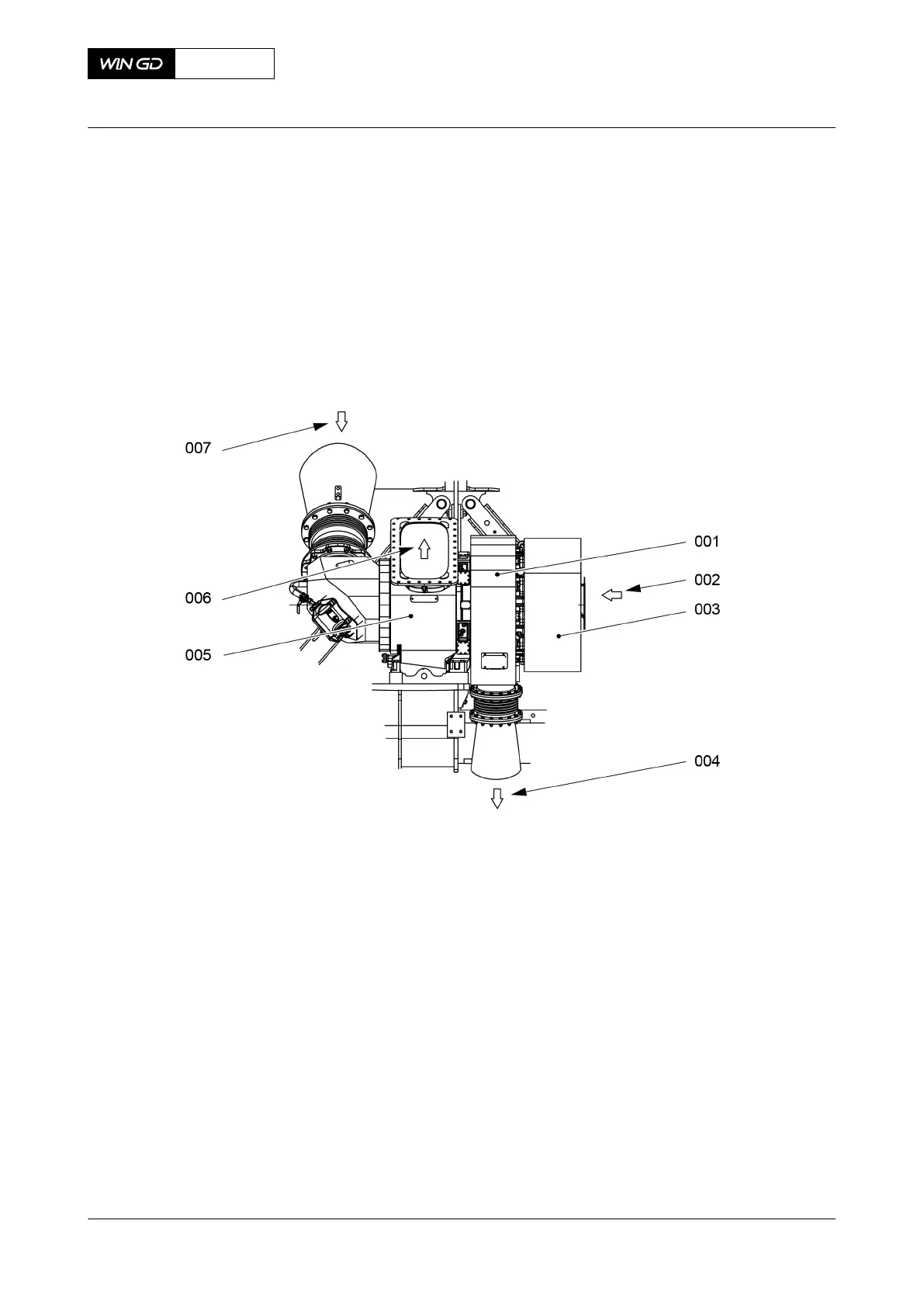5.6.2 Turbocharger
The compressor (001, Figure 5-43) of the turbocharger compresses the scavenge air to the
applicable pressure. The compressor is directly attached to the shaft of the turbine (005). The
remaining energy of the exhaust gas drives the turbine and thus the compressor.
The number and the size of the turbochargers is accurately tuned to the engine and the number
of cylinders.
Fig 5-43 Turbocharger (example)
Legend
001 Compressor 005 Turbine
002 Air inlet 006 Exhaust gas outlet
003 Silencer 007 Exhaust gas inlet
004 Air outlet
If a turbocharger becomes defective, you must stop the engine as quickly as possible to prevent
damage.
If repair or replacement of a turbocharger is not immediately possible, you can cut out the
defective turbocharger, refer to section 10.12 Temporary isolate a defective turbocharger. Then
the engine can operate at decreased load, refer to the limits in section 8.3 Start the engine -
general.
WinGD recommends to regularly clean the turbochargers and the silencers, refer to section 9.4
Clean the turbocharger during operation. This prevents or decreases contamination of the
turbochargers and thus increases the time between overhauls.
X92DF
AA00-6500-00AAA-043A-A
Operation Manual Turbocharger
Winterthur Gas & Diesel Ltd.
- 224 - Issue 002 2020-08
